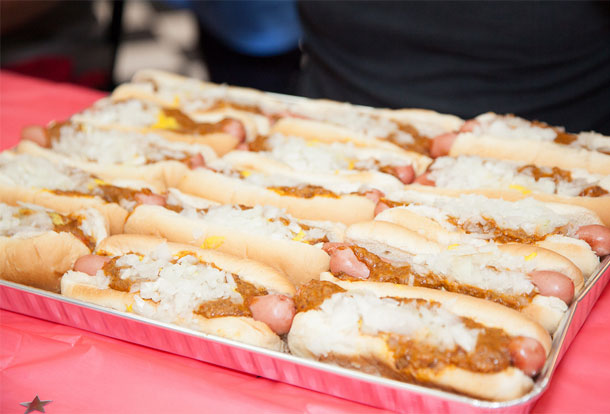Discover new horizons with the confidence of the Chevy Silverado, from busy streets to scenic views.

Every Detroiter knows one thing to be true: Coney dogs are as much as part of the Motor City as cars, Motown music and the Detroit River. What makes a coney a coney is a mix of local family history, a slavish devotion to ingredients and emotional connection to the way Detroiters eat together.
The story of the Coney dog begins in downtown Detroit. That is where a Greek immigrant named Constantine “Gust” Keros started selling hot dogs from a cart. He had come to Detroit in 1903 in part to work in the auto factories; he ended up focusing on food, his first love, instead.
According to family lore, a customer asked Keros what else he could add to his hot dog to make it even more delicious. Keros slapped on some homemade chili, spooned on some onion and squirted a line of mustard along the top. With those four ingredients, a Detroit legend was born.
“He had a line for his cart every single day,” American Coney Island co-owner Chris Sotiropoulos said.
The rest, as they say, came naturally.
According to Sotiropoulos, his grandfather named the famous restaurant on Lafayette Street after the things he loved. The first thing was his new home: America. The second was New York’s Coney Island, where a young Keros spent many hours when he first arrived in this county.

Photo Courtesy of American Coney Island
Keros saved his pennies and brought his brother, William, to work with him. But as some family businesses go, the two brothers fought and William decided to open his own Coney Island next door. American and Lafayette Coney Island regularly vie for the best in town, and it is a competition many Detroiters are happy to help settle with a taste test of both.
So how do you know a Detroit-area Coney dog from the rest of the pack? It is a combination of flavor, style and science. Coney dogs are defined in a sensory way, starting with the legendary snap as you bite into the casing, the rich chili flavor, sweet onions and spicy mustard.
The hot dog has to have natural casing. Many coney-island restaurants use Dearborn-brand products, honoring the local manufacturing of this delicious product. Get ready for a truth bomb: If your favorite Coney Island is American, it technically is a sausage, Sotiropoulos admits. That is because there are no byproducts in it – it is made from 100 percent meat, and that is how you define a sausage.
Oh, and you cannot change any of the ingredients. The bun should be steamed but not soggy. Sure, you can use Belgium mustard like American does. You can add more or less meat to the chili. You can use Vidalia, white or Spanish onions. But you cannot alter the basic nature of the Detroit coney.
Don’t ever mention using ketchup. That will get you run out of town.
Hungry for more? Here are some places to check out a Detroit coney that are beloved, off the beaten track or just hidden gems.
- Red Hots Coney Island, 12 Victor Street, Highland Park: Located on a side street near Henry Ford’s famous automotive plant, Red Hots offers coney islands in a homey, family-friendly setting.
- Duly’s Place, 5458 W. Vernor Highway, Detroit: This West Vernor Highway mainstay is beloved by professional chefs and everyone else in between. You need to try your coney from a spot along the front counter, where greats such as Anthony Bourdain have supped.
- Zeff’s Coney Island, 2469 Russell Street, Detroit: Things get kinda crazy at this Eastern Market mainstay, where they offer a Coney taco. It’s pretty delicious but definitely takes liberties. You may want to try a taco and a coney together if it is your first time.




